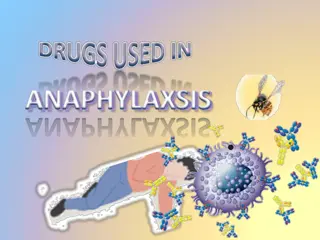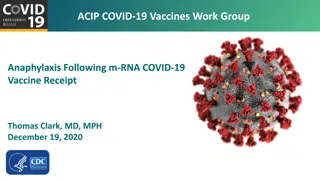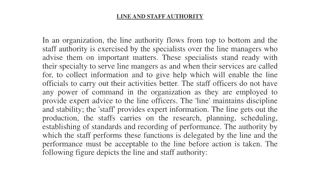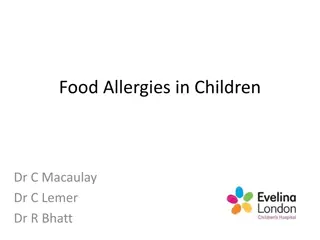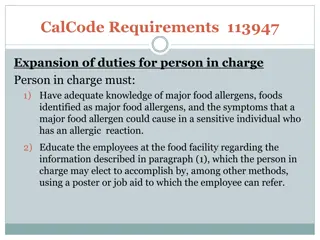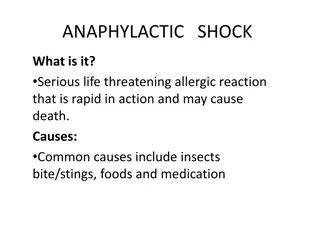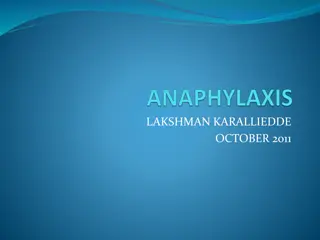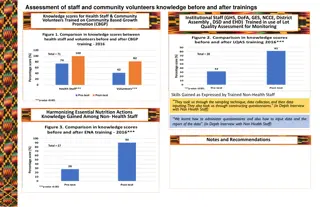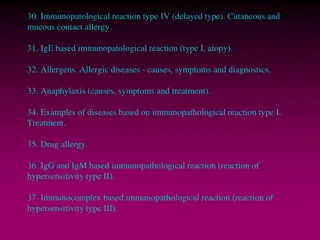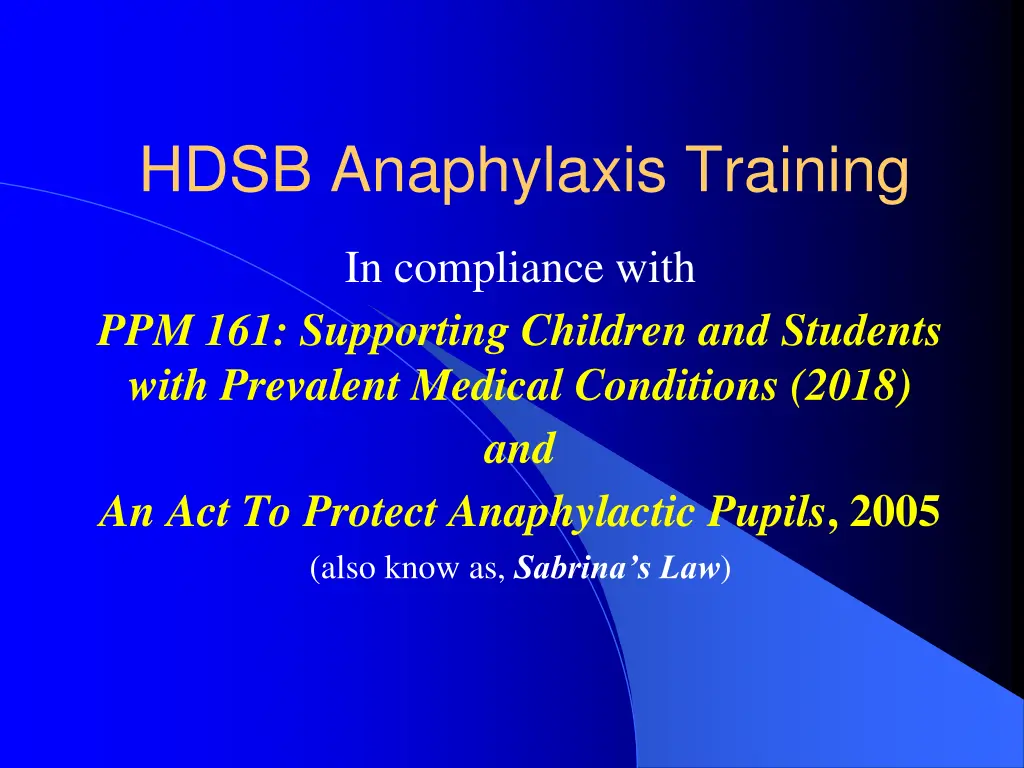
Understanding Anaphylaxis and Sabrina's Law
Learn about anaphylaxis, a severe allergic reaction posing life-threatening risks, its common causes, symptoms, and emergency response. Discover the significance of Sabrina's Law, a pivotal legislation aimed at safeguarding anaphylactic individuals. Be prepared and informed to support children and students with prevalent medical conditions effectively.
Download Presentation

Please find below an Image/Link to download the presentation.
The content on the website is provided AS IS for your information and personal use only. It may not be sold, licensed, or shared on other websites without obtaining consent from the author. If you encounter any issues during the download, it is possible that the publisher has removed the file from their server.
You are allowed to download the files provided on this website for personal or commercial use, subject to the condition that they are used lawfully. All files are the property of their respective owners.
The content on the website is provided AS IS for your information and personal use only. It may not be sold, licensed, or shared on other websites without obtaining consent from the author.
E N D
Presentation Transcript
HDSB Anaphylaxis Training In compliance with PPM 161: Supporting Children and Students with Prevalent Medical Conditions (2018) and An Act To Protect Anaphylactic Pupils, 2005 (also know as, Sabrina s Law)
Sabrinas Law Sabrina Shannon, a grade 9 student She died after eating French fries in the school cafeteria Her EpiPen was in her locker
PPM 161:Supporting Children and Students with Prevalent Medical Conditions HDSB Supporting Students with Anaphylaxis Administrative Procedure Anaphylaxis Plan of Care Annual training
Anaphylaxis is a sudden, severe, potentially life- threatening allergic reaction that may involve the skin, respiratory tract, gastrointestinal tract and/or cardiovascular system.
Common Causes of Anaphylaxis Food peanut, tree nuts, shellfish, fish, milk, egg, soy, sesame seed, wheat Medications Insect Venom Latex Immunotherapy (allergy shots)
Anaphylactic reactions can occur in the: upper respiratory system lower respiratory system skin digestive system as a generalized reaction called anaphylaxis
When is anaphylaxis most likely to occur? New situations Normal daily routines are interrupted During teenage years
An Anaphylaxis Plan of Care Location of two auto-injectors (one is always carried by student) Safety measures to reduce risk Symptoms of an anaphylactic reaction Emergency medical response
Think F.A.S.T. F FACE: itchiness, redness, swelling of face and tongue A AIRWAY: coughing, trouble breathing, swallowing or speaking S STOMACH: stomach pain, vomiting, diarrhea T TOTAL BODY: hives, rash, swelling, weakness, paleness, sense of doom, consciousness loss of
Emergency Response Plan A.C.T. A.: Administer the epinephrine auto -injector C.: Call 911 use the term Anaphylactic Reaction T.: Transport to hospital by ambulance
Remember It takes only 1 to 2 minutes for a mild allergic reaction to escalate to anaphylaxis.
Legal Liability Section c.7 s.3 (4) of the legislation ensures that no damages will be instituted with respect to any act done in good faith in response to an anaphylactic reaction.
What is an EpiPen? An EpiPen is a disposable drug delivery system with a spring-activated, concealed needle designed for emergency administration. EpiPens are available in 2 strengths: EpiPen Jr A smaller amount of epinephrine for children weighing less than 33 to a maximum of 66 lbs. EpiPen A larger amount of epinephrine for anyone weighing more than 66 lbs.
Using an Epi-Pen Administering an EpiPen is a simple two-step process: Remove blue safety cap by pulling straight up. Do not bend or twist. Swing or push orange firmly into mid-outer thigh until you hear a click. Hold on thigh for several seconds.
Supporting Students wtih Anaphylaxis Administrative Procedure Posted on the board website@ www.hdsb.ca Also posted in myHDSB, along with supporting resources for staff
For More Information Anaphylaxis Canada www.anaphylaxis.org www.eworkshop.on.ca/allergies Food Allergy and Anaphylaxis Network http://www.foodallergy.org Safe for Kids http://www.safe4kids.ca Health Canada www.hc-sc.gc.ca Allergy Asthma Information Association www.aaia.ca www.anaphylaxis.org www.eworkshop.on.ca/allergies http://www.foodallergy.org http://www.safe4kids.ca www.hc-sc.gc.ca www.aaia.ca



